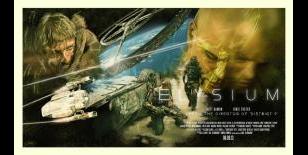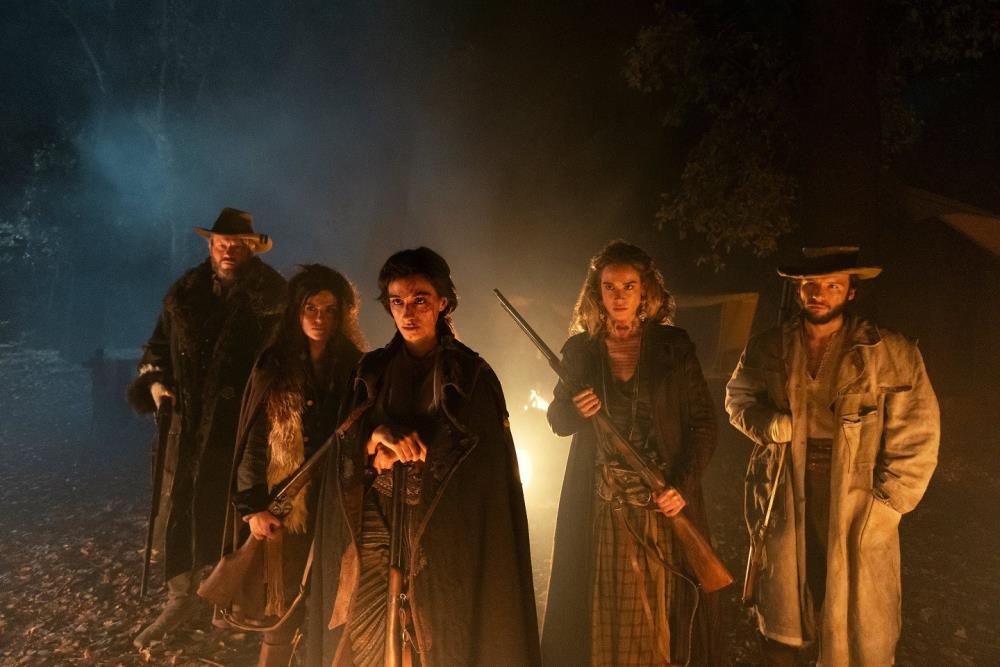
There was only one way to go but down, really.
Four years have passed since Neil Blomkamp’s District 9, a feature length film inspired by his original short “Alive in Joburg,” released into theaters and was lauded by critics as a classic and received a good helping of Oscar nominations, including Best Picture. When we were meant to get a videogame adaptation of Halo (which would probably have turned out like every other movie of its kind), fate instead decided to give us a bold, original dystopian tale that had as much brains as brawn. Although I didn’t get into Blomkamp’s freshman outing as much as the next guy—not in the sense of it feeling ‘overrated’ as it was personal preference, I still have a great amount of respect for what it was trying to say and immediately knew Hollywood stumbled upon a new star of a director. Despite yearning for more from this sophomore outing, Elysium is still a full-throttle action flick with a willingness to make broad strokes of social commentary and absolutely destroys the notion that this director is just a one-hit wonder.
Like District 9, Elysium is an allegory with a science fiction outer coat that presents a powerful thesis on a modern-day injustice. The year is 2154. Despite this sci-fi dystopia having robots, flying ships, and better healthcare, the disparity of income between the haves and have-nots has only expanded. Earth is now a fatigued, dusty planet filled with overpopulation problems, disease, and constant crime. The privileged have fled to a ring-shaped space station called Elysium housing a mostly-white population that has everything you could imagine: security, cleaner air, luxury, and medical pods that can cure any ailments. Being allowed onto this paradise is regulated via genetic branding yet illegal immigrants are still willing to pay what little they have to reach those healing devices, even at the risk of just being kicked back upon arrival or being shot out of the sky by Defense Secretary Delacourt (Jodie Foster)—I kept wondering if Jan Brewer was any sort of inspiration for the character’s looks upon first seeing the previews.
Enter: Max DeCosta (Matt Damon). Once a so-called legend of the criminal lifestyle, Max is now striving to just keep his nine-to-five factory job of making robots for Armadyne, a defense company that has a partnership with Elysium. After a work accident results in him having only five days to live, Max strikes a deal with an underworld kingpin to bring power back to the people for a free ride to the station and gets an exoskeleton drilled into his head and spine that makes him an even match for any android. What seems like a simple smash-and-grab job morphs into a major conspiracy that involves Delacourt, her sadistic henchman named Kruger (Sharlto Copley), his life-long friend Frey (Alice Braga), and more.
Even with a screenplay framed around a more conventional means of storytelling, there are a lot of masterful nuances built into it. Since every integral character, leading or side role, is given some sort of pre-existing motivations, they’re forced to adapt them to the ever-changing situations provided by the plot or other characters. None of those that would be deemed important to the script ever feel to JUST be there for a simple explanation or to act as a prod to get the plot moving along; it’s a solid juggling act that works as intended yet also comes within a hair’s breadth of feeling too chaotic in doing so. Because of so much being thrown at you, it feels like a bit of those world-building and slow-paced moments for extra characterization or biting satire—like the meeting between the robot parole officer and Max—are pared down a bit too much. That same yearning could also be extended to action itself. Not in the sense that any of them are bad—in fact, all of them are well-structured for the loud, aggressive violence that’s meant to be depicted (though I’m not a fan of that “body gore”) and contain a lot of inventive high-tech concepts, but rather in getting so many of these treats to the point of not properly digesting the last sequence.
Still, the modest step down in storytelling doesn’t mean that’s the case for the solid—if slightly uneven—visual filmmaking. Just like the artistry and technical expertise D9 was able to display with just a paltry thirty million dollars, Elysium effectively showcases Blomkamp’s powerful imagination with a greater sum of money. As imaginative as it is convincing, the dingy favelas and worn-down skyscrapers of futuristic Los Angeles attain that lived-in feeling that so welcomingly juxtaposes the antiseptic sci-fi spectacles of this summer. The robots have dings and/or graffiti on their outer shell, cars that took a few notes from Mad Max, and the smart mixture of practical effects and CGI display a sense of great dedication in making this world truly alive. If there’s one annoyance in regard to the direction it would be the overuse of slow-mo for many scenes and a misguided bullet time camera technique that crops up a couple of times throughout the film.
When it comes to acting, the level of quality seems to swing to both sides of the pendulum. Copley’s performance for both delivering his lines and simply emoting his ruthless presence on-screen are well done and show a respectable range from his characters of previous films—remarkable considering he only became a professional actor four years ago. Damon also delivers a dedicated and appealing performance. Not just for the stunt work (which he seemed to do most of it), but also that charismatic, low-key identity that gets him in trouble early on that makes it rather easy to grow sympathy for someone who earnestly wished to have a clean slate. Now, at the other end of the quality spectrum would be Jodie Foster. For a two-time Academy Award winner, it’s disappointing to see her just phone-in the persona and odd accent that constantly jumps everywhere in tone.
Despite having that strange identity of feeling a bit cluttered yet leaving me wanting more, Elysium still holds tightly to the idea that having more funds to paint a bigger canvas shouldn’t mean a watered-down compromise in an auteur’s brio regarding sociological examinations. Similar to the exoskeleton, Elysium’s construct is both hardwired with an action-packed backbone and thoughtful topical subjects to boot. In today's world where Hollywood so rarely gives out huge dollars to anything but sure-fire hits, having the audacity to aim for something original in concept and design is what makes Blomkamp’s effort such a great way to end this summer.
7.5

Deliver Me Review: The Swedish series follows two troubled teen and their troublesome lives when one of them is shot dead.

Fight For Paradise Review: This reality show is nothing new but there are so many uncomfortable moments that will definitely give you the ick.

Brigands: The Quest For Gold Review: The Italian drama follows a group of brigands, embarking on a journey to reclaim power and some hidden gold.
Hope everyone enjoyed the review. Feel free to comment. :)
I actually could use some help in finding the official name of the "annoying camera technique" that I couldn't find via google's listed sites. It's not the shaky cam (which is in the film and didn't mind), but something else. I'll try to explain:
Camera is initially aimed at Damon's right side of his head/body then everything seems to freeze for the camera to veer over to his left elbow where he's about to throw a punch. I say seem to because it feels like it's all done in one quick motion. It was reminiscent, or perhaps the same thing, of the Sherlock Holmes 2 part where Holmes and his crew are running away from Nazis in that wooded area.